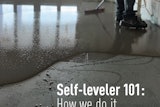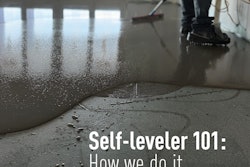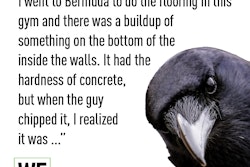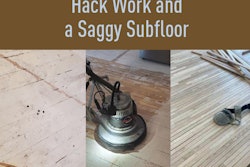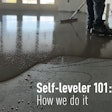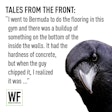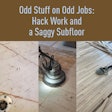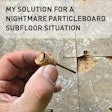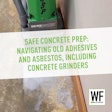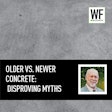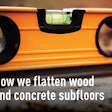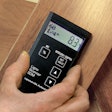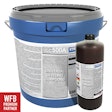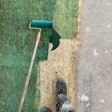I had a blog entry earlier this year about OSB subflooring. I want to continue that discussion some more. One question I received after the last entry was whether my statement that coated fasteners provided better holding properties was based on science or personal experience. My answer is both. Wood engineering books include information about the holding properties of fasteners. The numbers show that coated and deformed fasteners hold better than smooth-shanked fasteners. Deformed shanks include ring-shank, spiral shank and even nailing cleats. A screw can be considered a deformed shank, but other properties of screws put them in their own category.
From a personal standpoint, commonly used framing nails are "CC sinkers.” The CC stands for "cement coated." This is not the cement used in concrete, but a thermoplastic coating. If you have ever tried to pull one out, you can see the difference the coating makes. With a crowbar and regular nail, you can just steadily pry the nail out. With a CC nail, you pry like crazy, then all of a sudden the nail breaks loose and comes flying out.
As I mentioned, some of the fastener strength comes from bending the wood fibers. Woodworkers take advantage of this by using fingerboards to reduce kickback on tablesaws and shapers. But with OSB, the fibers are different than in solid wood. Often there are voids in the material, and the fibers can be shorter. So the holding power of the bent fibers is different.
Some other construction industries have apparently had issues with OSB. The National Roofing Contractors Association (NRCA) Roofing and Waterproofing Manual states:
"NRCA is concerned about potential fastener holding problems and dimensional stability caused by the effects of moisture where oriented strand board and wafer board products are used as roof decking." So some issues we've seen with OSB have also been seen by other industries.
Does that mean that OSB is a bad subflooring. NO!!!!
But it does mean that we have to be diligent in making sure installation of wood floors is done correctly. The subflooring has to be dry and stay dry, and the wood flooring has to be properly acclimated. As I mentioned earlier, some floors with major issues have been taken up and reinstalled over the existing OSB, and the problems have not come back. The only thing that was changed was the moisture levels. Make sure construction moisture is under control, including basement slabs and poured walls, and that crawlspaces are dry. I know, crawlspaces are nasty places, but they will poke you where it hurts if you don't verify conditions down there. The one I stuck my head in yesterday had a snake skin hanging from a pier and a black widow spider hanging out at the crawlspace door.
The other half of the issue is that the flooring has to be properly acclimated. Many of the issues I have seen over OSB subflooring include hardwood flooring that was installed too dry. My recommendation is to acclimate to 1/3 or 1/4 from the upper end of the expected range. If your annual expected range is 5 to 10%, acclimate to 8 or 9%, not just somewhere between 5 and 10%.
And all OSB is not the same. And that is a whole other story.










